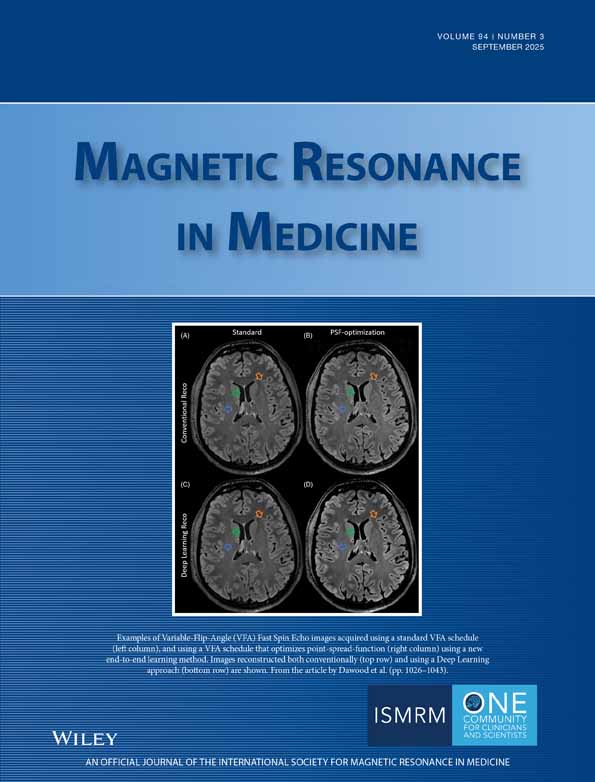Three-dimensional high-resolution T1 mapping and perfusion imaging in the normal and ischemic rat brain with hyperpolarized [2-13C]tertiary-butyl alcohol
Abstract
Purpose
To develop methods for three-dimensional relaxometry and quantitative perfusion imaging using hyperpolarized [2-13C]tertiary-butyl alcohol (TBA) in the rat brain under normal and ischemic conditions at 9.4 T. TBA is a freely diffusible tracer that readily traverses the blood–brain barrier, resulting in high tissue signal and long residence times.
Methods
A hybrid method consisting of rapid two-dimensional imaging of the arterial input followed by slower three-dimensional variable tip-angle balanced steady state free-precession imaging of the brain is implemented. Image data are analyzed to extract the signal amplitude and T1,2 decay rates. Knowledge of the tracer's kinetics in tissue is used to determine blood flow.
Results
Effective T1 relaxation rates in the rat brain range from about 15 to 20s. T2 ranges from about 60 to 250 ms, with the shortest relaxation times found in the brainstem. In ischemic regions, the effective T1 relaxation time is prolonged due to slower washout, whereas T2 is largely unchanged. The technique yields flow rates in cortical gray matter ranging from 140 mL/100 g/min in normal brains to less than 30 mL/100 g/min in ischemic cases.
Conclusion
Hyperpolarized TBA provides sufficient sensitivity and tissue residence time to enable three-dimensional mapping of relaxation and blood flow at 1.2–1.5-mm3 isotropic resolution in the rat brain. The technique has adequate signal-to-noise ratio in tissue with restricted flow. Raw images of the tracer can be acquired at 0.48 mm3 isotropic resolution and signal-to-noise ratio of about 13 in cortical gray matter.
CONFLICT OF INTEREST
BIDMC and GE Healthcare are parties to a research license agreement that permits in vivo use of hyperpolarization technology. GE did not provide any support, financial or otherwise, apart from this agreement.
Open Research
DATA AVAILABILITY STATEMENT
Raw data and analysis software will be made available upon reasonable request at https://research.bidmc.org/aaron-grant.




